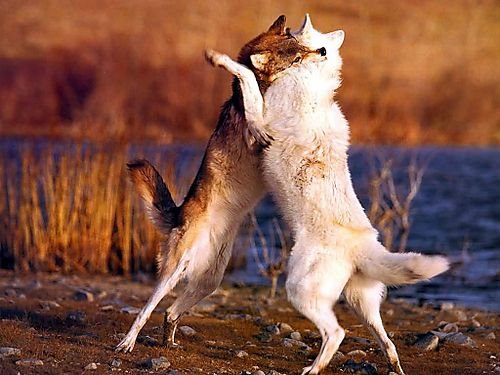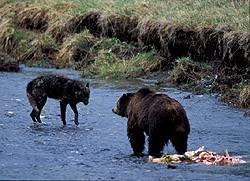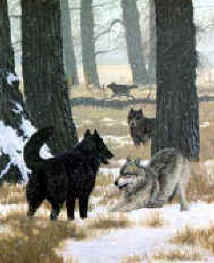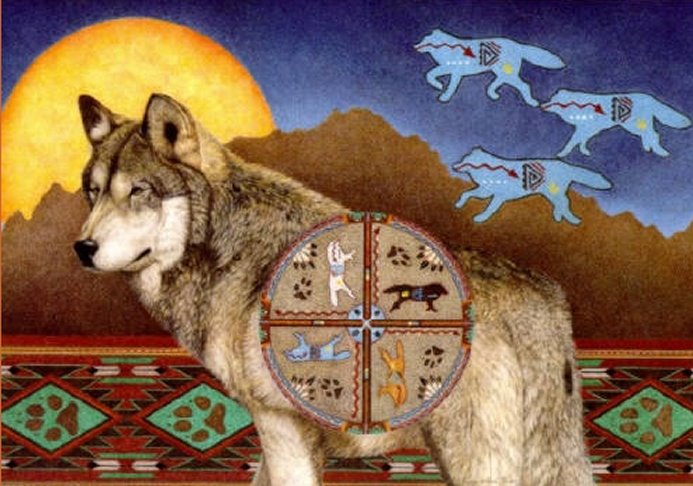
The title of this post is a quote from a long and detailed article by Steven Hayward in this week's issue of the Weekly Standard. While I have previously highlighted the facts that show AGW theory unproven, Mr. Smith covers that and much more. Here are some of the highlights:
It is increasingly clear that the leak of the internal emails and documents of the Climate Research Unit at the University of East Anglia in November has done for the climate change debate what the Pentagon Papers did for the Vietnam war debate 40 years ago—changed the narrative decisively. Additional revelations of unethical behavior, errors, and serial exaggeration in climate science are rolling out on an almost daily basis, and there is good reason to expect more.
The U.N.’s Intergovernmental Panel on Climate Change (IPCC), hitherto the gold standard in climate science, is under fire for shoddy work and facing calls for a serious shakeup. The U.S. Climate Action Partnership, the self-serving coalition of environmentalists and big business hoping to create a carbon cartel, is falling apart in the wake of the collapse of any prospect of enacting cap and trade in Congress. Meanwhile, the climate campaign’s fallback plan to have the EPA regulate greenhouse gas emissions through the cumbersome Clean Air Act is generating bipartisan opposition. The British media—even the left-leaning, climate alarmists of the Guardian and BBC—are turning on the climate campaign with a vengeance. The somnolent American media, which have done as poor a job reporting about climate change as they did on John Edwards, have largely averted their gaze from the inconvenient meltdown of the climate campaign, but the rock solid edifice in the newsrooms is cracking. Al Gore was conspicuously missing in action before surfacing with a long article in the New York Times on February 28, reiterating his familiar parade of horribles: The sea level will rise! Monster storms! Climate refugees in the hundreds of millions! Political chaos the world over! It was the rhetorical equivalent of stamping his feet and saying “It is too so!” In a sign of how dramatic the reversal of fortune has been for the climate campaign, it is now James Inhofe, the leading climate skeptic in the Senate, who is eager to have Gore testify before Congress.
The body blows to the climate campaign did not end with the Climategate emails. The IPCC—which has produced four omnibus assessments of climate science since 1992—has issued several embarrassing retractions from its most recent 2007 report, starting with the claim that Himalayan glaciers were in danger of melting as soon as 2035. That such an outlandish claim would be so readily accepted is a sign of the credulity of the climate campaign and the media: Even if extreme global warming occurred over the next century, the one genuine scientific study available estimated that the huge ice fields of the Himalayas would take more than 300 years to melt—a prediction any beginning chemistry student could confirm with a calculator. (The actual evidence is mixed: Some Himalayan glaciers are currently expanding.) The source for the melt-by-2035 claim turned out to be not a peer-reviewed scientific assessment, but a report from an advocacy group, the World Wildlife Fund (WWF), which in turn lifted the figure from a popular magazine article in India whose author later disavowed his offhand speculation.
But what made this first retraction noteworthy was the way in which it underscored the thuggishness of the climate establishment. The IPCC’s chairman, Rajendra Pachauri (an economist and former railroad engineer who is routinely described as a “climate scientist”), initially said that critics of the Himalayan glacier melt prediction were engaging in “voodoo science,” though it later turned out that Pachauri had been informed of the error in early December—in advance of the U.N.’s climate change conference in Copenhagen—but failed to disclose it. He’s invoking the Charlie Rangel defense: It was my staff’s fault.
The Himalayan retraction has touched off a cascade of further retractions and corrections, though the IPCC and other organs of climate alarmism are issuing their corrections sotto voce, hoping the media won’t take notice. The IPCC’s assessment that 40 percent of the Amazonian rain forest was at risk of destruction from climate change was also revealed to be without scientific foundation; the WWF was again the source. The Daily Telegraph identified 20 more claims of ruin in the IPCC’s 2007 report that are based on reports from advocacy groups such as Greenpeace rather than peer-reviewed research, including claims that African agricultural production would be cut in half, estimates of coral reef degradation, and the scale of glacier melt in the Alps and the Andes. Numerous other claims were sourced to unpublished student papers and dissertations, or to misstated or distorted research. . . .
. . . Two weeks ago the World Meteorological Association pulled the rug out from under one of Gore’s favorite talking points—that climate change will mean more tropical storms. A new study by the top scientists in the field concluded that although warmer oceans might make for stronger tropical storms in the future, there has been no climate-related trend in tropical storm activity over recent decades and, further, there will likely be significantly fewer tropical storms in a warmer world. “We have come to substantially different conclusions from the IPCC,” said lead author Chris Landsea, a scientist at the National Hurricane Center in Florida. (Landsea, who does not consider himself a climate skeptic, resigned from the IPCC in 2005 on account of its increasingly blatant politicization.) . . .
When Pielke, an expert on hurricane damage at the University of Colorado at Boulder, pointed out defects in the purported global-warming/tropical storm link in a 2005 edition of the Bulletin of the American Meteorological Society, the lead author of the IPCC’s work on tropical storms, Kevin Trenberth, called the article “shameful,” said it should be “withdrawn,” but in typical fashion refused to debate Pielke about the substance of the article.
Finally, the original Climategate controversy over the leaked documents from the University of East Anglia’s Climate Research Unit (CRU) (see my “Scientists Behaving Badly,” The Weekly Standard, December 14, 2009) is far from over. The British government has determined that the CRU’s prolonged refusal to release documents sought in 95 Freedom of Information requests is a potential criminal violation. . . .
But Pachauri’s days as IPCC chairman are likely numbered; there are mounting calls from within the IPCC for Pachauri to resign, amid charges of potential conflicts of interest (like Gore, Pachauri is closely involved with commercial energy schemes that benefit from greenhouse gas regulation) but also in part because Pachauri chose this delicate moment to publish a soft-core pornographic novel. (The main character is an aging environmentalist and engineer engaged in a “spiritual journey” that includes meeting Shirley MacLaine, detailed explorations of the Kama Sutra, and group sex.) . . .
The climate campaign is a movement unable to hide its decline. Skeptics and critics of climate alarmism have long been called “deniers,” with the comparison to Holocaust denial made explicit, but the denier label now more accurately fits the climate campaigners. Their first line of defense was that the acknowledged errors amount to a few isolated and inconsequential points in the report of the IPCC’s Working Group II, which studies the effects of global warming, and not the more important report of the IPCC’s Working Group I, which is about the science of global warming. Working Group I, this argument goes, is where the real action is, as it deals with the computer models and temperature data on which the “consensus” conclusion is based that the Earth has warmed by about 0.8 degrees Celsius over the last century, that human-generated greenhouse gases are overwhelmingly responsible for this rise, and that we may expect up to 4 degrees Celsius of further warming if greenhouse gas emissions aren’t stopped by mid-century. As Gore put it in his February 28 Times article, “the overwhelming consensus on global warming remains unchanged.” I note in passing that the 2007 Working Group I report uses the terms “uncertain” or “uncertainty” more than 1,300 times in its 987 pages, including what it identified as 54 “key uncertainties” limiting our mastery of climate prediction.
This central pillar of the climate campaign is unlikely to survive much longer, and each repetition of the “science-is-settled” mantra inflicts more damage on the credibility of the climate science community. The scientist at the center of the Climategate scandal at East Anglia University, Phil (“hide the decline”) Jones dealt the science-is-settled narrative a huge blow with his candid admission in a BBC interview that his surface temperature data are in such disarray they probably cannot be verified or replicated, that the medieval warm period may have been as warm as today, and that he agrees that there has been no statistically significant global warming for the last 15 years—all three points that climate campaigners have been bitterly contesting. And Jones specifically disavowed the “science-is-settled” slogan:BBC: When scientists say “the debate on climate change is over,” what exactly do they mean, and what don’t they mean?
Jones: It would be supposition on my behalf to know whether all scientists who say the debate is over are saying that for the same reason. I don’t believe the vast majority of climate scientists think this. This is not my view. There is still much that needs to be undertaken to reduce uncertainties, not just for the future, but for the instrumental (and especially the palaeoclimatic) past as well [emphasis added].Judith Curry, head of the School of Earth and Atmospheric Sciences at Georgia Tech and one of the few scientists convinced of the potential for catastrophic global warming who is willing to engage skeptics seriously, wrote February 24: “No one really believes that the ‘science is settled’ or that ‘the debate is over.’ Scientists and others that say this seem to want to advance a particular agenda. There is nothing more detrimental to public trust than such statements.”
The next wave of climate revisionism is likely to reopen most of the central questions of “settled science” in the IPCC’s Working Group I, starting with the data purporting to prove how much the Earth has warmed over the last century. A London Times headline last month summarizes the shocking revision currently underway: “World May Not Be Warming, Scientists Say.” The Climategate emails and documents revealed the disarray in the surface temperature records the IPCC relies upon to validate its claim of 0.8 degrees Celsius of human-caused warming, prompting a flood of renewed focus on the veracity and handling of surface temperature data. Skeptics such as Anthony Watts, Joseph D’Aleo, and Stephen McIntyre have been pointing out the defects in the surface temperature record for years, but the media and the IPCC ignored them. Watts and D’Aleo have painstakingly documented (and in many cases photographed) the huge number of temperature stations that have been relocated, corrupted by the “urban heat island effect,” or placed too close to heat sources such as air conditioning compressors, airports, buildings, or paved surfaces, as well as surface temperature series that are conveniently left out of the IPCC reconstructions and undercut the IPCC’s simplistic story of rising temperatures. The compilation and statistical treatment of global temperature records is hugely complex, but the skeptics such as Watts and D’Aleo offer compelling critiques showing that most of the reported warming disappears if different sets of temperature records are included, or if compromised station records are excluded.
The puzzle deepens when more accurate satellite temperature records, available starting in 1979, are considered. There is a glaring anomaly: The satellite records, which measure temperatures in the middle and upper atmosphere, show very little warming since 1979 and do not match up with the ground-based measurements. Furthermore, the satellite readings of the middle- and upper-air temperatures fail to record any of the increases the climate models say should be happening in response to rising greenhouse gas concentrations. John Christy of the University of Alabama, a contributing author to the IPCC’s Working Group I chapter on surface and atmospheric climate change, tried to get the IPCC to acknowledge this anomaly in its 2007 report but was ignored. (Christy is responsible for helping to develop the satellite monitoring system that has tracked global temperatures since 1979. He received NASA’s Medal for Exceptional Scientific Achievement for this work.) Bottom line: Expect some surprises to come out of the revisions of the surface temperature records that will take place over the next couple of years.
Eventually the climate modeling community is going to have to reconsider the central question: Have the models the IPCC uses for its predictions of catastrophic warming overestimated the climate’s sensitivity to greenhouse gases? Two recently published studies funded by the U.S. Department of Energy, one by Brookhaven Lab scientist Stephen Schwartz in the Journal of Geophysical Research, and one by MIT’s Richard Lindzen and Yong-Sang Choi in Geophysical Research Letters, both argue for vastly lower climate sensitivity to greenhouse gases. The models the IPCC uses for projecting a 3 to 4 degree Celsius increase in temperature all assume large positive (that is, temperature-magnifying) feedbacks from a doubling of carbon dioxide in the atmosphere; Schwartz, Lindzen, and Choi discern strong negative (or temperature-reducing) feedbacks in the climate system, suggesting an upper-bound of future temperature rise of no more than 2 degrees Celsius.
If the climate system is less sensitive to greenhouse gases than the climate campaign believes, then what is causing plainly observable changes in the climate, such as earlier arriving springs, receding glaciers, and shrinking Arctic Ocean ice caps? There have been alternative explanations in the scientific literature for several years, ignored by the media and the IPCC alike. The IPCC downplays theories of variations in solar activity, such as sunspot activity and gamma ray bursts, and although there is robust scientific literature on the issue, even the skeptic community is divided about whether solar activity is a primary cause of recent climate variation. Several studies of Arctic warming conclude that changes in ocean currents, cloud formation, and wind patterns in the upper atmosphere may explain the retreat of glaciers and sea ice better than greenhouse gases. Another factor in the Arctic is “black carbon”—essentially fine soot particles from coal-fired power plants and forest fires, imperceptible to the naked eye but reducing the albedo (solar reflectivity) of Arctic ice masses enough to cause increased summertime ice melt. Above all, if the medieval warm period was indeed as warm or warmer than today, we cannot rule out the possibility that the changes of recent decades are part of a natural rebound from the “Little Ice Age” that followed the medieval warm period and ended in the 19th century. Skeptics have known and tried to publicize all of these contrarian or confounding scientific findings, but the compliant news media routinely ignored all of them, enabling the IPCC to get away with its serial exaggeration and blatant advocacy for more than a decade.
The question going forward is whether the IPCC will allow contrarian scientists and confounding scientific research into its process, and include the opportunity for dissenting scientists to publish a minority report. Last March, John Christy sent a proposal to the 140 authors of IPCC Working Group I asking “that the IPCC allow for well-credentialed climate scientists to craft a chapter on an alternative view presenting evidence for lower climate sensitivity to greenhouse gases than has been the IPCC’s recent message—all based on published information. . . . An alternative view is necessary, one that is not censured for the so-called purpose of consensus. This will present to our policymakers an honest picture of scientific discourse and process.” Christy received no response. . . .
. . . [A]d hominem arguments from the climate campaigners also make clear which camp is truly guilty of anti-intellectualism. Gore and the rest of the chorus simply will not discuss any of the scientific anomalies and defects in the conventional climate narrative that scientists such as Christy have pointed out to the IPCC. Perhaps the climate campaign’s most ludicrous contortion is their response to the record snowfall of the eastern United States over the last two months. The ordinary citizen, applying Occam’s Razor while shoveling feet of snow, sees global warming as a farce. The climate campaigners now insist that “weather is not climate,” and that localized weather events, even increased winter snowfall, can be consistent with climate change. They may be right about this, though even the IPCC cautions that we still have little ability to predict regional climate-related weather changes. These are the same people, however, who jumped up and down that Hurricane Katrina was positive proof that catastrophic global warming had arrived, though the strong 2005 hurricane season was followed by four quiet years for tropical storms that made a hash of that talking point.
The ruckus about “weather is not climate” exposes the greatest problem of the climate campaign. Al Gore and his band of brothers have been happy to point to any weather anomaly—cold winters, warm winters, in-between winters—as proof of climate change. But the climate campaigners cannot name one weather pattern or event that would be inconsistent with their theory. Pretty convenient when your theory works in only one direction. . . .
There is much more to this exceptional article. Read it here.
Note that I added bolding to one line:
Another factor in the Arctic is “black carbon”—essentially fine soot particles from coal-fired power plants and forest fires, imperceptible to the naked eye but reducing the albedo (solar reflectivity) of Arctic ice masses enough to cause increased summertime ice melt.
I highlighted that just to make a point as to how alternative theories that are very deserving of a hearing - and that would significantly impact how we allocate scarce resources - have gotten pushed wholly aside by the politicized science of AGW. More on that here.















































1 comment:
> But the climate campaigners cannot name one weather pattern or event that would be inconsistent with their theory. Pretty convenient when your theory works in only one direction. . . .
Indeed -- I'd take them far more seriously if they were as accurate as Poor Richard's Almanack at predicting warm or cold weather for the coming winter/summer seasons.
If you can't predict the near-term AT ALL, how can you possibly predict the long term with fractions of a degree of accuracy? It's preposterous all on its own.
Post a Comment